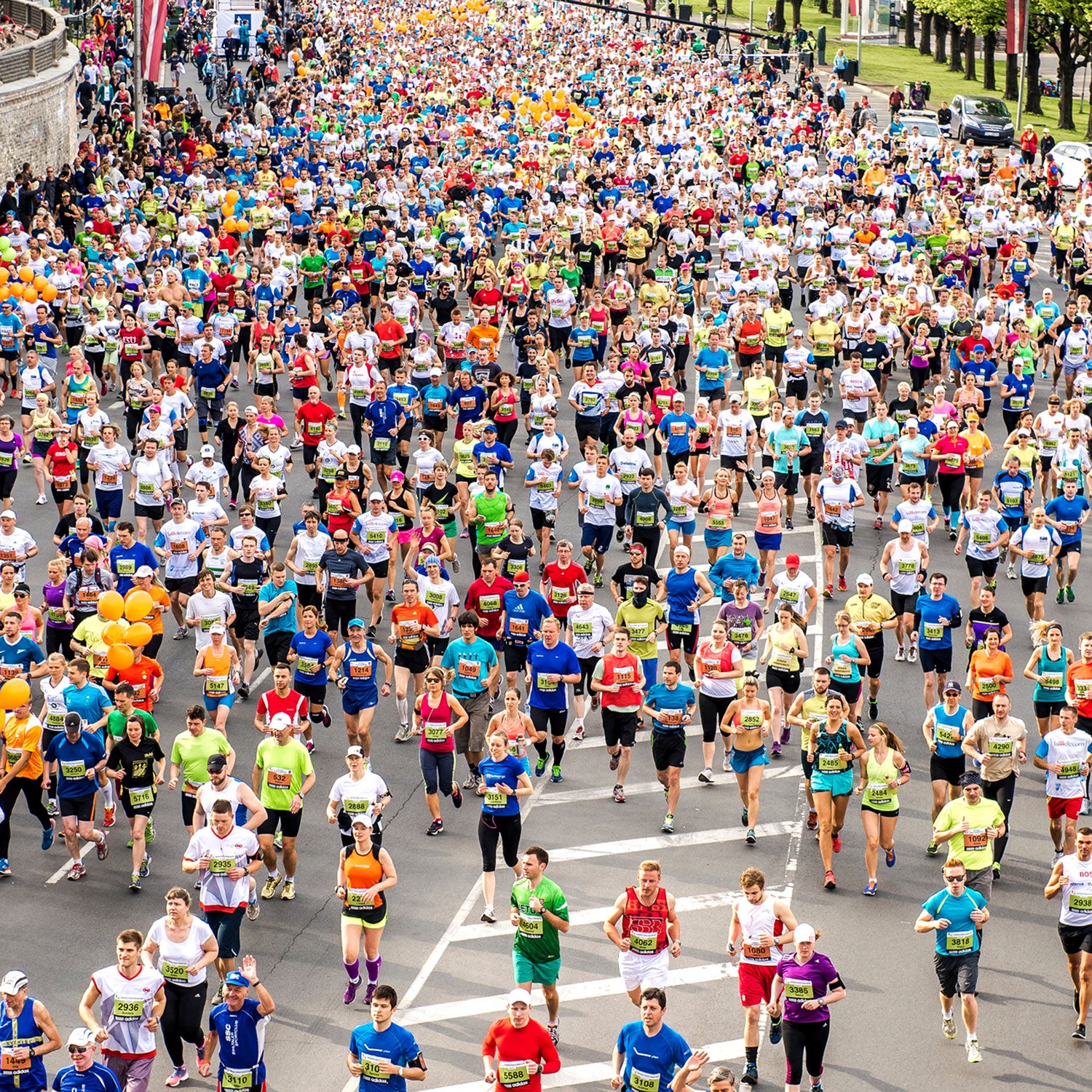When it comes to training and pre-race preparation, what are the principal differences between a half and a full marathon? Sure, marathoners need to run more, but exactly how much more? What about tapering? Do half-marathoners need to start cutting back their mileage weeks in advance, a la marathoners? And what do fast runners do differently than everyone else?
The folks at Strava recently provided us with data from 80.6 million runs logged over four years—including 2.6 million half-marathons and 1.8 million marathons—and, rather than keeping you forever in suspense, we thought we’d shed some light on what real runners are doing, and what seems to be working. Because sometimes the herd gets it right.
Below, we compare graphs corresponding to half-marathon and full marathon runners, and offer our thoughts on what you can glean from the data.
Half-Marathon Completion vs. Marathon Completion
Half Marathon
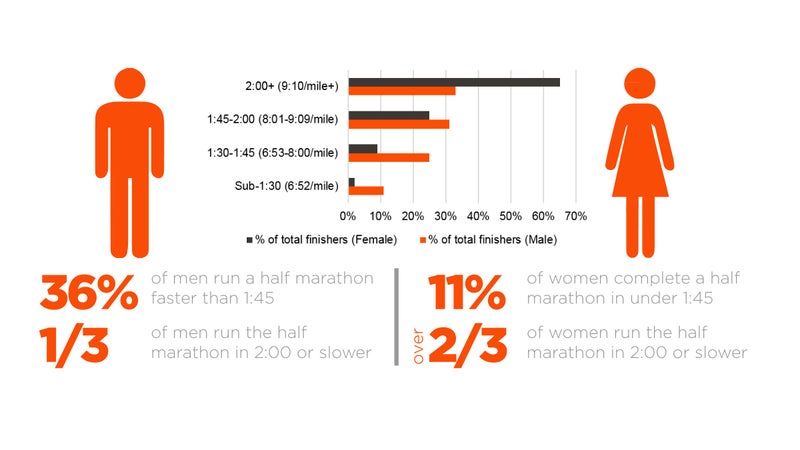
Marathon
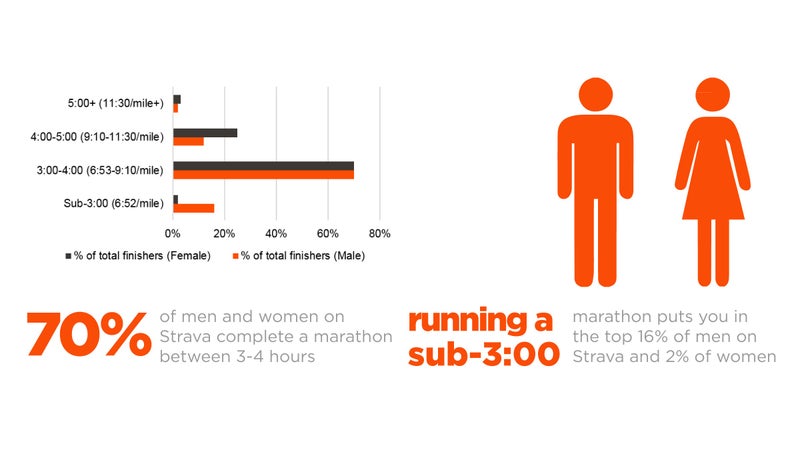
No big surprises here. Just more evidence that a sub-3:00 marathon puts you in the upper echelon of amateur running. Interestingly, among Strava users of both sexes, the percentage of those who ran a sub-3:00 is very similar to that of those who ran a sub-1:30 half. This seems counterintuitive, as one would assume that running twice the distance at the same pace would be substantially harder.
Weekly Mileage
Half Marathon
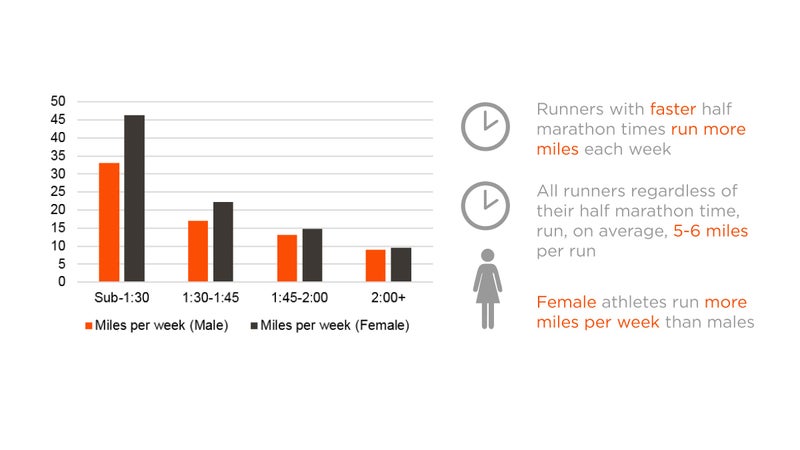
Marathon
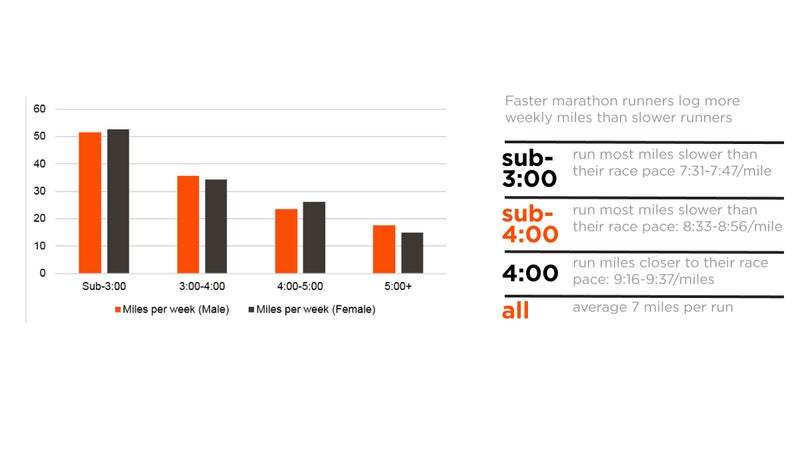
It shouldn’t shock anyone to learn that faster runners log more miles in training. (Running is, for the most part, like any pursuit—the more you do it, the better you get.) More unexpected is the discrepancy between miles logged among female and male runners training for the half. Women run around five more miles per week on average than men for the same finish time.
It should be noted as well that the half-marathon is significantly more popular among female runners—Running USA’s latest survey shows that women made up 61 percent of half-marathon finishers in 2015. Men still make up a small majority among full marathon entrants (56 percent in 2015).
Long Runs vs. Short Runs
Half Marathon
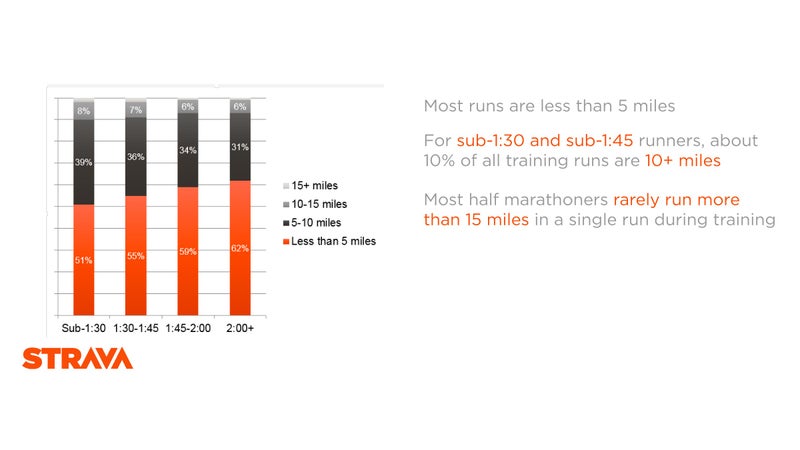
Marathon
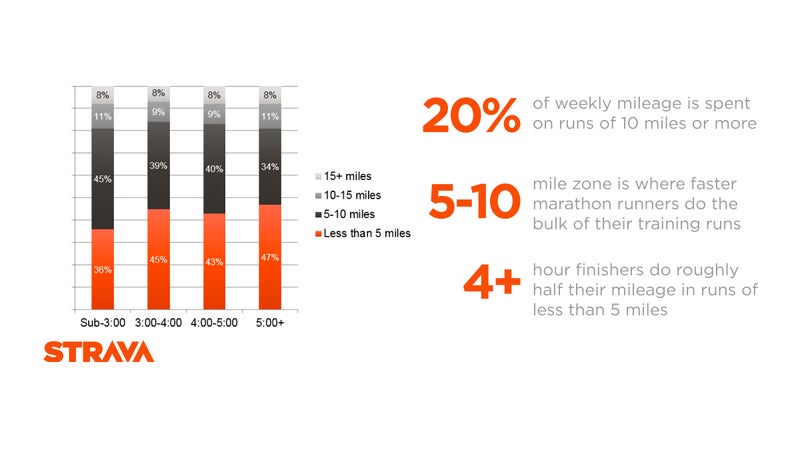
What’s revealing here is how similar the percentage breakdown is, particularly when comparing marathoners’ longer runs. That runners of vastly different ability levels have roughly the same ratio between long runs to short runs suggests the crucial factor is intensity. As the average pace information included alongside the “weekly mileage” graphs above reveals: it’s not necessarily what you run, but how you run—a conclusion we've reached in the past.
Peaking, Tapering, and Recovery
Half Marathon
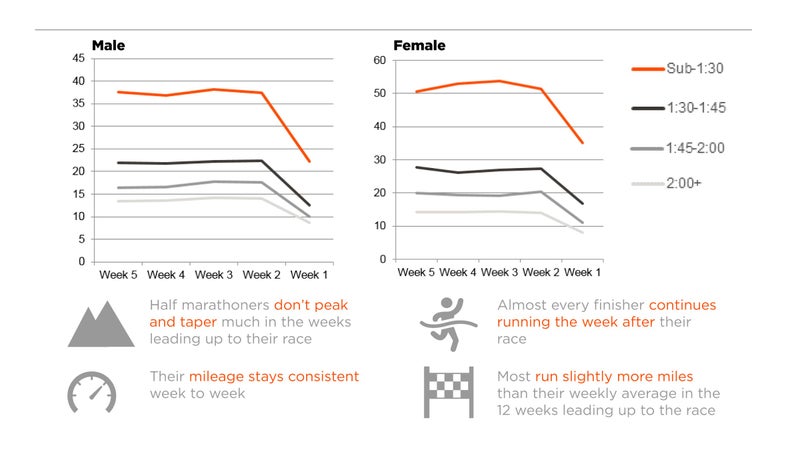
Marathon
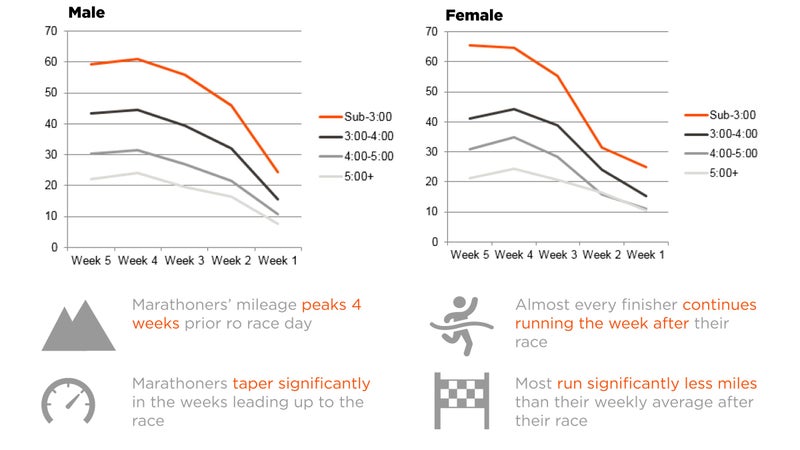
There seems to be a consensus among runners of all skill levels that tapering is essential for the full marathon, but not so much for the half. It’s a useful reminder that the marathon is still a completely different animal that takes a significantly greater toll on your body. It’s also easier to prime your system for running 13.1 miles; committed half-marathoners will have run the race distance (or close to it) several times during their training cycle, so there is little need for a proper pre-race taper.
Day Before the Race
Half Marathon
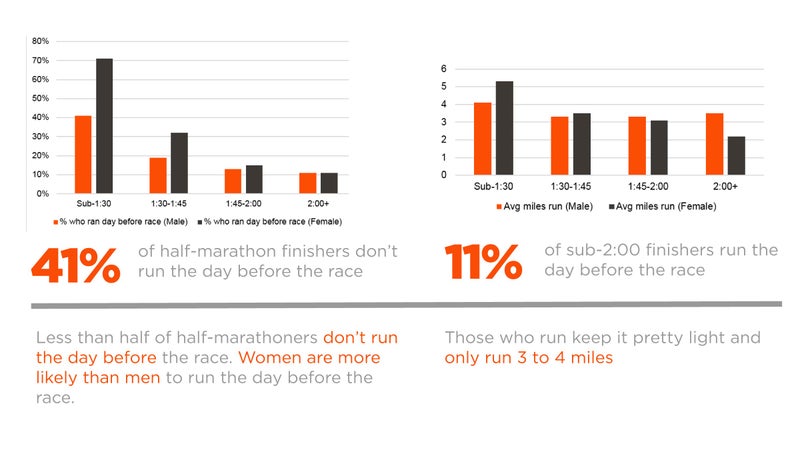
Marathon

The standout stat here is that, among marathon runners, 70 percent of sub-3:00 finishers go for an easy run the day before the race. This supports the value of the shakeout run—i.e. an easy jog on the day before (or early on the morning of) your event. The idea is that you “shake out” pre-race nerves and keep your muscles loose. The numbers indicate that this practice is more common among faster runners—perhaps because slower counterparts are less experienced, and more worried about detracting from their race day performance. As the data reveals, they shouldn’t be: the whole point of a shakeout is that it should be short and very easy. Done right, it won’t be detrimental to your race and might actually make you run better.

